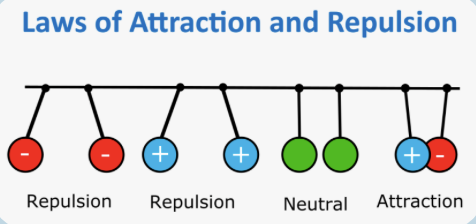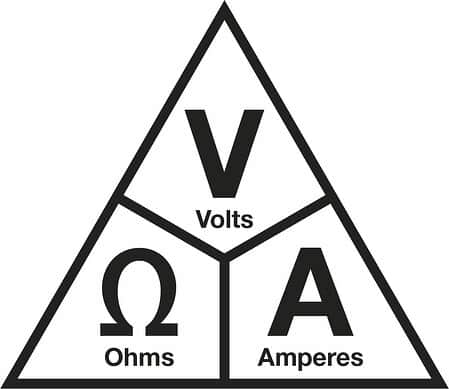physics - yr 9
Electricity
electricity is the movement of energy through charged particles, like electrons or ions
charged particles have a property called electric charge, which means they can attract or repel other charged particles
electric charge comes in two types: positive or negative
electrons
electrons are the charges particle most commonly involved in electricity
in most materials, electrons are tightly bound to their atoms, however, in electrical conductors, they are able to freely move between atoms
materials in which electrons are held on loosely and flow freely between atoms are called electrical conductors
some atoms hold onto their electrons tightly and electrons do not move through these materials very well
these materials are called insulators
conductors are conductors because their electrons are loosely bound
insulators are insulators because their electrons are very tightly bound
there are 2 main ways electricity can work, depending on what the electrons are doing
static electricity: happens when electrons build up in one place and don’t move (static means not moving)
current electricity: happens when electrons are able to move through a pathway. in some circuits, they move in one directions, and in others, they switch directions back and forth
anything that is polar has an intrinsic charge
Requirements for static electricity
for static electricity to occur the 2 materials need to be in contact (ideally rubbing hard)
In the rubbing of the materials, there should be an electrical charge imbalance
static electricity
some insulating (non-conducting) materials can “steal“ electrons from other materials when rubbed together
the object that gains electrons now has a negative change
the object that loses electrons now has a positive charge
static electricity is a build up of electric charge on a surface
opposite charges attract
negative and positive
Like charges repel
negative and negative
positive and positive

electric circuits - THIS IS COMING UP
electric circuit - path that transmits electricity
consist of three essential items:
a power supply to provide the electrical energy (e.g. batteries, power packs)
a load or loads in which electrical energy is converted into other useful forms of energy (e.g. light, heat, sound) such as lights, heaters or a motor
a conducting path that allows electric charge to flow around the circuit
in the squishy circuit practical the play doh would’ve been the conducting path
must be made of conducting materials (e.g. metals)
circuit diagrams
maps of electric circuits need to be drawn so that people all over the world can read them
these maps are called
connecting wire | ji | hi |
battery (single and double) | hi | hi |
Ampere | hi |
voltmeter
switch open
switch closed
resistor
light globe
2 wires joining
a resistor is any device or material that makes it difficult or harder to electric charge.electrons to flow through
as a result of being made up of less conductive materials
any material that is conductive that is not a wire can be represented by the load symbol (the rectangle)
amy material that is insulating can be represented by the resistor symbol (the zig-zag one)
Current
current: how many coulombs (number of electrons that represent one ampere) of electrons flows through a conductor per second
1 amp =
1 coulomb =
using a water hose analogy
the flow rate
the water pressure: how much force the water is pushing with (you can feel this if you put a finger over the end of the hose)
voltage: amount of electrical energy (comes from with in a power supply) that is used to push electrons through a conductor
unit: voltage or v and is measured by a voltmeter
the power: how kuch work
Energy
represented in waves
Energy manipulates matter
Endothermic energy: absorbs energy
exothermic energy: generate energy
can change matter physically or chemically
if it hits a valence electron it may cause the electron to hit another electron and so on to show the “flow“ of electrons
Electric current
electric current is the amount if electric charge flowing through a wire per second
measured in amperes (A) (or Amps for short)
the electric charge comes from the electrons
Parallel circuits
Branching circuits
more that one conducting pathway for current to flow
voltage is the same across loads
current is split voltage is the same
Series circuits
voltage is split current is the same
only 1 conducting pathway
loads connected side by side
voltage is split across loads
Resistance
resistance is the measure of how an object resists the flow of electrons
resist the flow of electrons → controls
OHMs law
ohms law is a formula used to calcualte the relationship between volatage, current and resistance in an electrical circuit
voltage = resistance and current
V = R x I
Where V is in (volts/V), I is in (amps/a) and resistance is in (Ohms/Ω)
